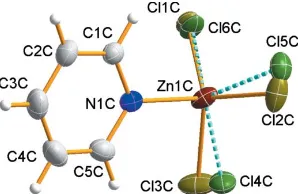Crystal structure of trans difluoridotetrakis(pyridine κN)chromium(III) trichlorido(pyridine κN)zincate monohydrate from synchrotron data
Full text
Figure


Related documents
direct guidance from the measured lateral range was used to control the. steered wheel angle as it move
The)present)study)deals)with)the)way)right.wing)populist)parties)take)on)these)fears) and) respond) to) levels) of) anti.immigration) attitudes) in) their) countries.)
from one another and secreted by di f fer ent tracks along the same pathway. Microsomal fracti ons containing oviduct protei ns have been isolated from oocytes
In summary, our meta-analysis demonstrates that elevated ZFAS1 expression correlates with poor prognosis in cancer patients, suggesting that ZFAS1 might serve as a
Further, GO analysis showed that biological processes including stem cell proliferation, differentiation, and development were correlated with the identified dysregulated
Figure 6: Model of APL13/APJ-Notch3 signaling in colon adenocarcinoma. APL13 can be secreted from colon carcinoma cells and act on APJ in an autocrine manner. Along with
Furthermore, important differences were observed between cancer types (Table 2 and Figure 3A) (Kruskal Wallis test, p-value < 0.05), with colon and lung exhibiting 2-3 fold
These models are two-mode regression with time-varying coefficient (TMR-TVC) models. It should be emphasized that there are two important parameters in the TMR-TVC models: the